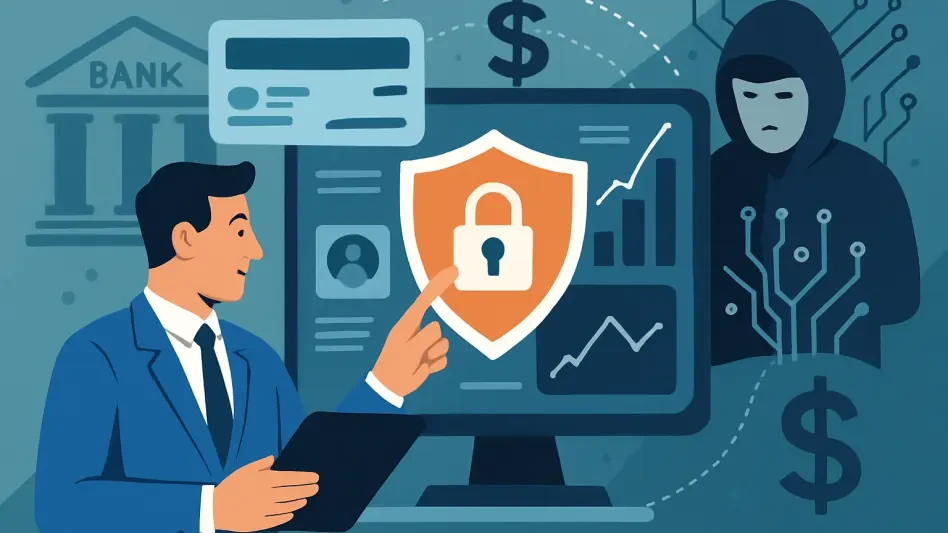Recent months have witnessed significant developments in the realm of cybercrime, presenting new challenges for security experts and governmental entities alike. Among the most concerning threats are the emergence of a sophisticated Remote Access Trojan named QatarRat, alleged massive data breaches affecting India’s Goods and Services Tax portal, and a compromise within the infrastructure of the infamous ransomware group LockBit. These occurrences underscore the evolving landscape of cyber threats, requiring concerted efforts to enhance security systems and proactive measures. As cybercriminals continually adapt their strategies, there is an urgent need for vigilance and advancement in cyber defense mechanisms to mitigate the risks posed to various digital domains.
Emergence of QatarRat
QatarRat, a rapidly growing concern in cybercrime circles, showcases a troubling advancement in remote access and control technology. Recently introduced on dark web platforms, QatarRat offers capabilities like remote desktop protocol access, keylogging, ransomware deployment, and disabling Windows security features. This Trojan is marketed under subscription models, allowing for widespread misuse by cybercriminals seeking adaptable tools. The availability of such technology highlights the ingenuity and resourcefulness of cyber perpetrators in developing tools that bypass traditional security measures. The anticipated launch of QatarRat v2 promises even more extensive functionalities, incorporating features from well-known malware such as AndroRat. Its evolution signifies an ongoing threat to cybersecurity frameworks and emphasizes the urgent need for improved defense strategies.
The adaptability of QatarRat raises concerns about its potential use in large-scale attacks, targeting individuals and organizations globally. Its subscription model ensures continuous revenue for its developers while providing users ongoing access to updates and enhancements. Moreover, the integration of diverse malware functionalities into QatarRat makes it a versatile tool, capable of executing complex operations across different digital environments. Such developments demand rigorous examination by cybersecurity professionals to unravel its intricacies and formulate countermeasures. With the possibility of further iterations of QatarRat, vigilance is essential to prevent its misuse and protect sensitive data from exposure or manipulation by malicious actors.
Data Breaches and Their Implications
The alleged sale of data sourced from India’s GST portal presents grave concerns regarding governmental data protection practices. Reports indicate that a CSV file containing 850 million personal records, replete with sensitive information such as names, addresses, phone numbers, and email addresses, is under circulation in illicit online marketplaces. The breach underscores vulnerabilities inherent in governmental portals, posing substantial risks to individuals whose data may be exploited for fraudulent purposes. The extent of this breach remains uncertain, but it sparks debates around the adequacy of existing security protocols in safeguarding citizens’ information against unauthorized access.
Additionally, this breach highlights broader implications for national security and trust in public institutions tasked with the stewardship of important personal data. With data breaches becoming increasingly commonplace, there is a pressing need for the adoption of robust security frameworks that ward off threats and protect sensitive information from malicious entities. The evolving nature of cyber threats compels administrators to reassess their capabilities in detecting and preventing breaches, ensuring a delicate balance between accessibility and security. Encouragingly, such incidents catalyze conversations around cybersecurity reforms that can usher in a new era of enhanced legislative and technological defenses.
LockBit Leak and Its Consequences
LockBit, a well-known ransomware collective, recently experienced a significant compromise within its infrastructure, laying bare the inherent risks faced by cybercriminal organizations from their own weaknesses. Nearly 60,000 Bitcoin addresses and internal data were exposed, allegedly due to a PHP vulnerability. This breach holds substantial ramifications for ransomware operators who rely on secure channels for their illicit activities. Ironically, it serves as a cautionary tale, spotlighting the challenges in maintaining a secure environment amidst aggressive pursuits. The fallout from LockBit’s breach reveals the vulnerabilities nestled within criminal operations, adding complexity to the continuously evolving cybersecurity landscape.
The implications of this breach extend beyond the immediate exposure of Bitcoin addresses and internal data, raising questions about the sustainability of illicit operations that defy cybersecurity norms and regulatory oversight. The continued sophistication of ransomware techniques necessitates innovative countermeasures that anticipate cybercriminals’ tactics and fortify protection. Moreover, the breach underscores the interconnectedness of the cyber realm, where weaknesses can ripple through various levels of criminal operations, leading to unforeseen consequences. As cybersecurity realms strive to subvert ransomware incursions, this incident could signal a turning point in how cybercriminals protect their assets and navigate the competitive terrain of illicit undertakings.
Ongoing Threats to Financial Systems
The regular sale of stealer logs targeting cryptocurrency wallets and credentials reaffirms the persistent threats challenging financial systems worldwide. These sales indicate ongoing efforts to exploit vulnerabilities within the burgeoning digital assets sector, emphasizing the risks faced by individuals and institutions alike. As cryptocurrencies grow in popularity, they become increasingly attractive targets for cybercriminals. Their decentralized nature and lack of regulation present significant challenges to secure them adequately from malicious entities aiming to misappropriate funds or disrupt operations. Such threats necessitate comprehensive strategies to ensure financial systems remain resilient against evolving risks.
Ideally, defending against these threats involves a concerted approach that combines advancements in technology, solid regulatory frameworks, and collaborative efforts across industries. As cybercriminals innovate, measures to protect digital assets must remain uncompromisingly robust, addressing peculiarities inherent in cryptocurrency exchanges and wallet technologies. There is a growing demand for awareness and education among stakeholders concerning safeguarding assets. With these threats unlikely to abate, concerted actions grounded in policy advancements and strategic integrations of cutting-edge technology become imperative. Advocating for enhanced security standards ultimately bolsters overall system resilience and guarantees continued confidence in digital financial ecosystems.
Navigating the Evolving Cyber Threat Landscape
Recent months have marked notable progressions in the realm of cybercrime, introducing fresh challenges for security professionals and government agencies alike. Among the most worrisome threats is the appearance of a highly advanced Remote Access Trojan known as QatarRat. In addition to this, there have been reports of extensive data breaches impacting India’s Goods and Services Tax platform, threatening sensitive fiscal information. Furthermore, there has been a compromise within the infrastructure of the notorious ransomware syndicate LockBit, which has further raised concerns about international cybersecurity. These incidents highlight the ever-changing landscape of cyber threats, urging unified efforts to bolster security frameworks and implement both preventive and responsive strategies. As cybercriminals continue to evolve their tactics, there’s an acute necessity for heightened vigilance and progress in cybersecurity measures to adequately counteract the dangers posed to myriad digital platforms.





